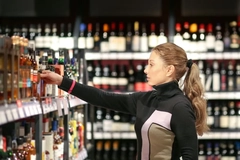
- Industry news
Industry news
- Category news
- Reports
- Key trends
- Multimedia
Multimedia
- Journal
- Events
- Suppliers
Suppliers
- Home
- Industry news
Industry news
- Category news
- Reports
- Key trends
- Multimedia
Multimedia
- Events
- Suppliers
Suppliers
The future of label innovation: Eco-friendly, personalized and functional

Label companies are increasingly turning toward recyclable and customizable solutions amid consumer demand for sustainability and personalized products.
Packaging Insights discusses developments in label innovation, including recyclable materials, reducing material usage, and customized design, with Billerud and Innova Market Insights.
According to data from Innova Market Insights’ 2024 Packaging Survey, sustainability is important for consumers globally. This includes compostable labels, directly printed labels, laser engraving, and smart labels.
However, Aaron Haas, senior vice president at Billerud North America, argues that it is important that sustainability credentials do not outweigh the functionality of labels, which include design, material use, communication, and responding to regulatory demands.
Not “just a sticker”
Haas tells us that label innovation is defined by clear communication, customization, and regulatory standards. The purpose of labels is: “To communicate to the users a variety of information required throughout the supply chain.”
 Label innovation extends beyond the sticker from adhesive to facestock technology (Image credit: Billerud North America).He says a common misconception about labels is that it is “just a sticker,” detailing that labels are more than this, as “there is a high amount of technology in each label design from the facestock to the adhesive and even the release liner to deliver that label to the end use.”
Label innovation extends beyond the sticker from adhesive to facestock technology (Image credit: Billerud North America).He says a common misconception about labels is that it is “just a sticker,” detailing that labels are more than this, as “there is a high amount of technology in each label design from the facestock to the adhesive and even the release liner to deliver that label to the end use.”
In January, UPM Raflatac partnered with Highlands to harness its adhesive and coating technology for the sticky note collaboration, highlighting how label innovation extends beyond the label itself.
Haas says that besides technology and material, labels have many functions. “Brand identity, legal and compliance information, shipping labels on packages that travel around the world, and barcodes to get your consumer products from the shopping cart to your door.”
For example, connected packaging solutions, such as QR codes, can help foster an emotional experience that enhances brand loyalty.
Innova Market Insights’ data indicates diverging responses to including smart label solutions, like QR codes. In Asia, close to 36% of respondents reported being very interested, however in North America, 32.63% of respondents reported being not interested in smart labels.
Compostable innovation
Haas highlights that current label innovation trends include “sustainability in general: down gauging (using less material), recyclability, compostability, linerless labels, and smart labels.”
The packaging industry is witnessing a surge in compostable solutions and, according to Innova Market Insights data, 31.6% of respondents reported being very interested in compostable labels globally.
 Compostable materials are one example of sustainable label innovation, according to Haas.In March, Packaging Insights spoke with Daphna Nissenbaum, CEO and co-founder at Tipa, about how compostable solutions can offer a “transformative solution” to global packaging waste exports by reducing waste at its source.
Compostable materials are one example of sustainable label innovation, according to Haas.In March, Packaging Insights spoke with Daphna Nissenbaum, CEO and co-founder at Tipa, about how compostable solutions can offer a “transformative solution” to global packaging waste exports by reducing waste at its source.
Haas also indicates that recyclable solutions are a key to label innovation. Recently, Sensormatic Solutions, a Switzerland-based packaging and tech company, launched its SPX Sustainable Label, which is over 90% plastic-free and made from renewable materials.
Moreover, Haas notes that using fewer materials can also be considered a core trend for label innovation. In April, DataLase, a photonic printing solutions company, partnered with TamperTech to develop a tamper-evident tape that reduces the need for additional paper or plastic labels and conventional wet printing processes that use inks or solvents.
Labeling the future
As consumers increasingly demand more environmentally-aware packaging solutions, label innovation must adapt its eco-credentials, like reducing material usage and increasing recyclable or compostable content.
Haas says that “Sustainability and reducing waste, better performance in their equipment, and lighter label stock” are important current preferences for consumers.
“With the large shift to e-commerce, there has been less emphasis, in some markets, for brand awareness and more on the efficiency of packaging design for shipping and distribution.”
Hass concludes by indicating that the future of label innovation holds “continued focus on sustainability and functionality. Labels that are multifunctional as well and customizable for the digital e-commerce world.”











